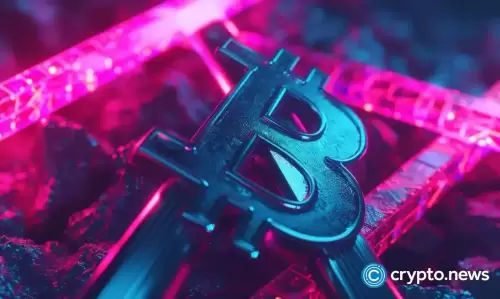 |
|
 |
|
 |
|
 |
|
 |
|
 |
|
 |
|
 |
|
 |
|
 |
|
 |
|
 |
|
 |
|
 |
|
 |
|
Happy Friday, Defiers! It’s me, Cami. Quick update: We're changing up the daily newsletter format. Now you'll get analysis of the latest news trends from yours truly (occasionally, other Defiant team members will step in), plus the top news we wrote in the past 24 hrs.

Olivia Capozzalo & Camila RussoMay 16, 2025
Olivia Capozzalo & Camila Russomay 16, 2025
Happy Friday, Defiers! It’s me, Cami.
Quick housekeeping note: We’re changing up the daily newsletter format. Now you’ll get analysis of the latest news trends from yours truly (occasionally, other Defiant team members will step in), plus the top news we wrote in the past 24 hrs.
We hope you like the change – feedback is very welcome! Now let’s get to it.
The most interesting trend in DeFi right now is the memecoin wars. It’s a sign that hope is not lost in making crypto’s OG use case actually useful.
Crypto’s first non-money use case to find product-market fit was to let anyone anywhere issue tokens and buy tokens. Seems simple, but it’s a pretty revolutionary idea that anyone with an internet connection can issue an asset and sell it to anyone with an internet connection, with no intermediaries. It’s what ignited the first ever non-Bitcoin speculative crypto mania, with ICOs on Ethereum in 2017. NFTs in 2022 were a version of that, and of course, the latest memecoin frenzy is an obvious iteration.
And every time, crypto traders drove the meta to the most degen version of itself possible.
This cycle, it’s memecoins. Other than buying and selling inside jokes with other anons, memecoins never even had the pretense of aspiring to achieve a higher goal. And maybe that’s why this wave of “trading tokens on the internet” degraded so fast, with insiders manipulating markets to get in first and then dump on everyone else in schemes that involved from C-list celebrities to presidents.
The main platform where this activity is happening is pump.fun on the Solana network, which spurred the creation of 10 million tokens, generating a staggering $700 million in its brief 15-month existence. A Solidus Labs report says 99% of those memecoins are pump-and-dumps or rug pulls.
What we’re seeing now, though, is a reaction to the financial nihilism that has ruled crypto for the past year. Token launchpads are trying to create better — or at least different — models, chipping away at pump.fun dominance (also see the news below this section!).
No-code token launchpad Let’s BONK launched in April, with its key difference of offering 1% of its trading fees to token creators. The idea behind the rev share scheme is that creators will be more incentivized to stick around and provide value for their tokens. At the same time, there will be less of a reason for them to engage in the shady tactics that have become commonplace.
The downside is if most memecoins are already rug pulls, then scammers are just getting more money out of them. In any case, the idea took off and Let’s BONK started to make a dent in pump.fun’s market share. Pump.fun reacted by directing 50% of their trading fees to token creators.
Then there’s the most recent pump.fun challenger, Believe App, which lets anyone create a token by replying to the company’s X posts. No crypto knowledge or infra is required. The platform also shares 50% of fees with token creators. Though there has been some criticism here about whether creators are actually getting half.
The revenue sharing approach aims to attract founders building real products, rather than just memecoins. There have been some such cases, though the vast majority of the tokens launched are still, of course, memecoins.
Memecoins were briefly left for dead after everyone got fed up with the degree of crime and greed. Tokens like LIBRA and MELANIA made it clear it was an insiders’ game. Gamblers will leave the casino if they realize odds are always stacked against them. But these incipient memecoin wars show the sector is making a comeback.
I think that’s bullish. It shows there’s still optimism that we can find a better way of trading tokens on the internet. Hopefully, more innovation will mean better experiences for the market. Some low-hanging fruit for innovation would be vesting and the ability to customize supply and team distribution.
The best outcome is if we can create a future where all of the world’s biggest companies raise capital onchain, giving everyone access to their upside. On the way there, we should also figure out how to trade memecoins without getting fleeced.
Now, let’s look at the latest news
✍️ In today’s newsletter:
🙏 Sponsored
📈 Markets in the last 24 hrs:
THANKING OUR NEWSLETTER SPONSORS
| NEWSLETTER CONTINUES BELOW |
Soul is a cross-chain lending protocol aggregator that unifies liquidity across lending protocols, offering seamless access to the best borrowing and lending rates across ecosystems. Users can supply assets on one
Disclaimer:info@kdj.com
The information provided is not trading advice. kdj.com does not assume any responsibility for any investments made based on the information provided in this article. Cryptocurrencies are highly volatile and it is highly recommended that you invest with caution after thorough research!
If you believe that the content used on this website infringes your copyright, please contact us immediately (info@kdj.com) and we will delete it promptly.






























































